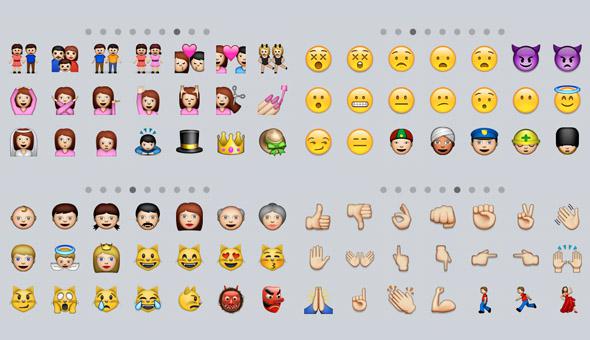Across mobile, and especially in iOS, people use emojis to express deep and complicated emotions. But the lack of diversity in the human-related emojis makes it hard to accurately represent life through these pictograms.
For the most part (see above), they either depict white people/disembodied white hands, or the traditional Simpsons-yellow, which is meant to be more neutral. The abstract colors are all right, but don’t really cut it when there’s such a critical mass of emojis depicting white people.
In a statement to MTV Act, an Apple spokesperson admitted that the company agrees and wants to change things.
Tim [Cook, Apple CEO] forwarded your email to me. We agree with you. Our emoji characters are based on the Unicode standard, which is necessary for them to be displayed properly across many platforms. There needs to be more diversity in the emoji character set, and we have been working closely with the Unicode Consortium in an effort to update the standard.
Without a hard timeframe, it’s hard to tell how serious Apple is, or how much power the company can wield over the Unicode consortium (which develops international software standards). An FAQ about emoji on the consortium website explains, “The Unicode Consortium does not design emoji … We do not make or sell fonts, images, or icons … Adding characters to an encoding standard involves a long, formal process.” The site includes detailed instructions for submitting “character encoding proposals.”
But the campaign for more diverse emojis has been raging for almost two years now, and includes proponents like Miley Cyrus. It’s time to push one of these proposals through and give the people what they want! And if you don’t give a crap about emojis, you can just support the issue on principle.
